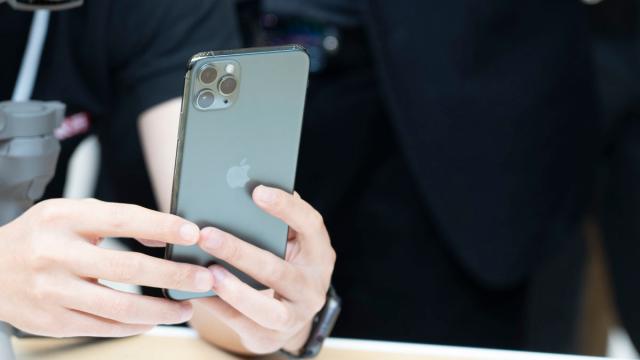Another year, another new iPhone. I know someone says this every year, but I can’t shake the feeling that the iPhone 11 doesn’t seem quite as exciting as previous models. Now some of that could simply be due to update fatigue, as the iPhone’s legacy extends back more than ten years to 2007. But I’d argue the more significant factor that’s making me feel less enthused about the Phone 11’s launch is that its tech doesn’t live up to expectations.
A few years ago, the iPhone X represented a brand new approach to iPhone design with Apple implementing new features like a vibrant OLED screen with slimmer bezels, Face ID, and even silly things like Animoji.
Then last year, Apple made a somewhat surprising move by introducing the iPhone XR, which cherry-picked many of the best features from the iPhone X and XS, and then put them into a more affordable package.
Now we arrive at the iPhone 11 and iPhone 11 Pro. Aside from a new triple camera module, what else is really new? Sure, Apple included a brighter screen, a new A13 Bionic chip, and better battery life. The addition of Dolby Atmos audio and support for Wi-Fi 6 are nice too.
But Apple is one of the three biggest smartphone makers in the world. Iterative improvements like these should be the baseline. LG, Huawei, Samsung, and others already released phones with at least three rear cameras. Some of these, like the Mate 20 Pro and LG V40, are over a year old.
Same goes for the iPhone 11’s new dedicated night mode, which comes almost a year after Google introduced Night Sight on its Pixel phones. The iPhone 11 feels like it’s more about playing catch up than serving as a platform for breakthrough innovation.
However, what’s even more concerning are all the improvements we didn’t get, including features that at one time seemed like surefire inclusions such as reverse wireless charging and native support for the Apple Pencil.
The lack of reverse wireless charging feels like a significant omission. With reverse wireless charging, you can use your phone to lend some extra juice to a friend in need or use it to recharge other gadgets or accessories like your Apple Watch.
Not being able to do the latter is a bigger deal than it might seem, because with reverse wireless charging, the next time you go on a trip, you can leave your smartwatch charging cradle at home, and use your phone as a charging pad instead. On phones like the Galaxy S10 and Huawei Mate 30, you can even have the phone plugged in while you do this so that you can charge both the phone and the watch at the same time. It’s super convenient.
Yup, sounds like backside charging is out. https://t.co/8EGrRX1KBA
— Mark Gurman (@markgurman) September 10, 2019
Meanwhile, the lack of support for the Apple Pencil on the iPhone 11 feels like a missed opportunity for Apple to challenge phones like the Galaxy Note 10. Over the past year, Apple has steadily been adding compatibility for the Apple Pencil to nearly every iPad, including the brand new 10.2-inch standard iPad.
But because the iPad Mini 5 only works with the first-gen Apple Pencil and the iPhone doesn’t support it at all, Apple fans don’t have a ton of options if they want a small, portable, and modern device for drawing and taking notes. (And let’s not forget, none of Apple’s laptops or desktops support touch or stylus input of any sort.)
Also, with Apple’s reliance on 3D infrared dot projectors for Face ID, it seems like Apple has hit a wall when it comes to minimising the size of its notch and moving closer to a truly all-screen design. And don’t get me started about Apple continuing to rely on the Lightning port for charging and data, despite the iPad Pro moving over to USB-C in 2018.
Where is all the support for stuff like the high refresh rate ProMotion display that you get on an iPad Pro? No bump in base storage? (Apple is sticking with 64GB instead of 128GB or 256GB like you get on a high-end Samsung or Huawei phone.) What makes the iPhone 11 Pro worthy of its “Pro” tag?
Hey, at least Apple will finally include a beefier power brick with the iPhone 11 Pro, so you don’t need to buy extra gear to get full fast-charging speeds. (Sorry regular iPhone 11 buyers, that model still comes with a wimpy 5-watt charger instead of the 18-watt adaptor included with the Pro.)
And all of this doesn’t even factor in other rumoured new features that may or may not show up on Apple’s 2020 iPhones, like the addition of an in-display fingerprint reader or support for 5G. For years, a lot of people have been worried that the pace of Apple’s tech innovation has been slowing down, and with the iPhone 11, that sentiment feels like it hits home more than ever before.
Don’t get me wrong, putting three cameras on the back of the iPhone 11 Pro is a significant improvement, and Apple’s new Deep Fusion image processing techniques seem intriguing. But when you look at the smartphone market as a whole, every top-flight smartphone ought to have wide, ultra-wide, and telephoto cameras at this point. It’s not a revolutionary idea.
